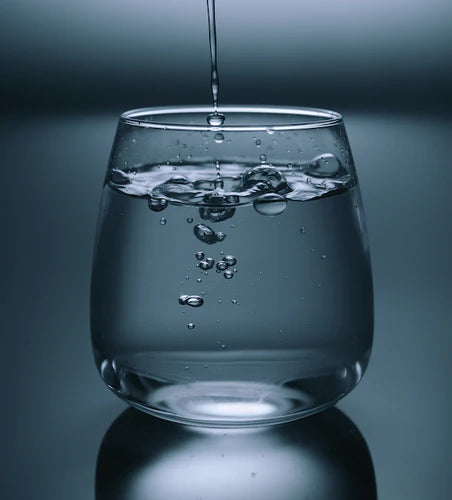Reverse osmosis is a purification method of mythic proportions — but can you decipher fact from fiction?

Reverse Osmosis is a powerful filtration method that is remarkably effective at reducing dangerous “forever chemicals.” But there’s more nuance to the world of reverse osmosis filters than you might think: not all reverse osmosis filters are identical, and reverse osmosis filters aren’t as perfect as they may seem. In this article, we’ll be debunking three easy-to-believe myths about reverse osmosis filters — and telling you the truths you need to know when investing in a water filtration system like Wisewell.
MYTH: All reverse osmosis filters produce more wastewater than usable water.
TRUTH: It’s true that traditionally, reverse osmosis systems have diverted more water down the drain than into your glass. Most of the standard reverse osmosis systems produce four gallons of wastewater for every gallon of usable water. But new technology has drastically improved that ratio. For example, Wisewell recycles the wastewater — After the purification process, the residual water is deposited back into the removable tank that you use to fill the Wisewell. That water is then reused as part of the purification purposes, making the system extremely efficient: on average, for every 3–4 gallons of fresh water produced, only 1 gallon of wastewater needs to be discarded.
MYTH: All reverse osmosis filters require professional installation.
TRUTH: This is not true. Most reverse osmosis filters are under-the-sink filters, meaning they attach to your existing plumbing system; there are also whole-home reverse osmosis filters, though their prices are much higher, ranging from $12,000 to $18,000. These filters, since they’re appended to your pipes, require an intense installation process, as well as yearly professional maintenance. But Wisewell doesn’t connect to your plumbing, and doesn’t require any installation at all: it’s a free-standing machine with a removable tank, so it can live in any room in your home.
MYTH: Reverse osmosis filters last forever.
TRUTH: Reverse osmosis filters are powerful, but they’re not immortal. They use pressure to push your water through a semipermeable membrane, trapping forever chemicals in the membrane while uncontaminated water flows through the filter. The membrane can eventually become unusable due to contaminant buildup, clogs, or simple use. This isn’t a flaw; this is just par for the course with such a delicate membrane. However, you can extend a filter’s life by pairing it with other purification methods. For example, Wisewell uses a carbon filter in addition to reverse osmosis, which helps the reverse osmosis filter last for an average of 18 months. Replacing the filters is easy with Wisewell’s twist-and-click technology and filter subscription service.
When you invest in a reverse osmosis filter, make sure you pair it with other filters, don’t bite off more installation than you can chew, and keep an eye on your filter’s wear and tear (if you buy a Wisewell, you can monitor your filters in the app). When used smartly, reverse osmosis filters are a powerful purification tool and will allow you to take care of your water like an expert.




